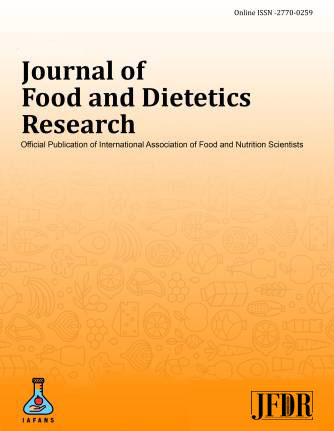PREVALENCE OF SEVERE ACUTE MALNUTRITION AMONG UNDER FIVE CHILDREN IN SELECTED TRIBAL POPULATION
Malnutrition among tribal children
DOI:
https://doi.org/10.48165/jfdr.2022.2.2.2Keywords:
Severe Acute Malnutrition (SAM), Malnutrition,, Attapaddy, Nutritional Status, Mid Upper Arm CircumferenceAbstract
Background &objectives: The nutritional status of children in their early years is critical for their proper growth and development. Severe Acute Malnutrition (SAM) is a public health issue that affects children worldwide and in developing countries, yet progress in combating the many types of malnutrition is relatively slow. The main objective of the present study was to determine the nutritional status of children aged 6 to 59 months living in the Attappady block of Palakkad District. Materials and Methods: A community-based cross-sectional study was conducted among 334 children from 1600 households in the province, out of a total of 12600 households. The children's sociodemographic, dietary, and clinical information was collected using a pretested semi-structured questionnaire. Three easily and quickly measurable parameters namely height, weight, and Mid Upper Arm Circumference (MUAC) were measured using the standard protocol. The children were considered as having underweight and stunting if their weight for age and height for age were below -2SD of WHO standards (Morley, 2008). Results: The present study comprised of 173 (51.8%) male and 161(48.2%) female children out of the total 334 children observed in the study. Male children were found to have a higher prevalence of underweight and stunting. The risk factors such as low birth weight, inadequate protein intake, respiratory infection, history of frequent episodes of diarrheal diseases, and presence of worm infestation were significantly associated with under-nutrition. Assessment of Infant young child feeding practices revealed that improper nutritional care during younger age is the positive contributing factor for under-nutrition in young children.
Interpretation & conclusions: The high prevalence of SAM among under-five children was recorded and strong positive correlation was observed between age, body weight, crown heel length, and MUAC in both boys and girls. The plight of nutritional deprivation in early pregnancy and marginal poor nutritional status of the tribal children were the risk factors for SAM among tribal children. The findings showed that child nutrition in tribal Attapaddy is complex, requiring multi-sectoral, multi-disciplinary, and multi-level intervention to alleviate malnutrition.




